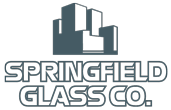Low-E architectural glass increases the efficiency of a building’s energy performance. The low emissivity coating minimizes infrared (IR) and ultraviolet light waves from entering a window and drastically changing the temperature.
Energy bills are a massive operational expense for any commercial office building (HVAC, lighting, computer appliances, etc.). It’s why some property developers and facility managers consider Low-E glass panes to be a worthwhile long-term investment.
But why and how does Low-E glass boost energy efficiency so much?
Springfield Glass Company, a commercial glazing contractor with over 35 years of industry experience in Southwest Missouri explains.
Let’s Address it: Why is Glass Common in Most Buildings?
It’s not just aesthetically pleasing, offering plenty of natural light, but it doesn’t put much weight on the foundations of a building. Lastly, it’s an energy-efficient asset that helps work alongside, rather than against, a building’s HVAC system.
In lieu of rising energy prices (globally), energy-efficient glass installation on high-rise and multi-story offices is increasingly appealing.
Finally, architectural glass accentuates a building’s natural design and provides lasting value to the property.
1. U-Values for Glass are LOWER Than Brick & Cement
The amount of heat flow allowed for glass is greater than for brick or cement. That means more insulation and less energy waste when running your building’s HVAC every month.
The difference in energy efficiency is measured by looking at the U-values (the measure of insulation capacity) of both construction materials.
According to Vitro Glazings, there are other ways to measure the difference in energy efficiency: Solar Heat Gain Coefficient (SHGC), Visible Light Transmittance (VLT), and Light to Solar Gain, to name a few.
2. Additional Low-E Coatings Improve a Building’s Energy Efficiency
You can add on additional low-emissivity coatings. These “extra” coatings serve to increase the U-value of the glass and are commonly used to reduce reflective glare.
Two types of Low-E coatings:
- Solar Control Low-E Coatings (soft coat) – contains a high quantity of heat
- Passive Low-E Coatings (hard coat) – gives maximum solar heat gain
Low-emissivity glasses are manufactured in two ways, with “hard coat” and “soft coat” processes. These processes ensure the inside of a building is kept cooler by reducing the amount of UV rays entering the glass.
Only visible light is passes through. Harmful UV rays bounce off the glass. All of the warm heat that’s inside of the building gets reflected back, preserving a steady internal temperature.
Sounds impressive? Well, as you might have guessed, most large-scale Low-E glass facades aren’t cheap. It’s why most commercial builders are hesitant about paying for them. The high price tag is the number one impediment.
However, it’s important to consider the long-term cost-savings associated with well-insulated, low emissivity glass. In hot summer months, energy consumption can be reduced by as much as 30-50%!
Over time, the investment can produce considerable savings in monthly energy bills.
3. Low-E Windows Offer Greater Long-Term Cooling Savings Than Tinted or Double-Glazed Windows
Tinting the windows of your business can be tempting. After all, tinted window panes are typically the cheaper option when compared with insulated ones.
The fact is that low-emissivity glass provides far better energy savings for the long-term by ensuring that cool air does not escape and that hot air/UV rays bounce off its protective, microscopic coating.
Choose Premium Architectural Glass Installations with Springfield Glass Co.
Our team has years of experience specializing in commercial glass installations for large- and small-scale commercial developments. Contact us today for a free quote: 417-883-6555.
